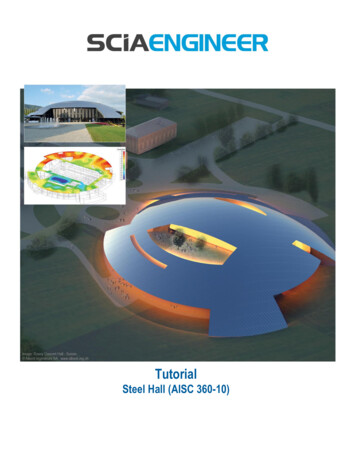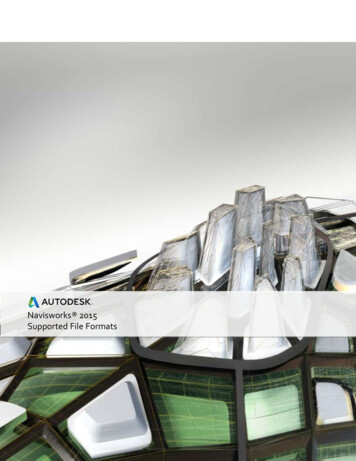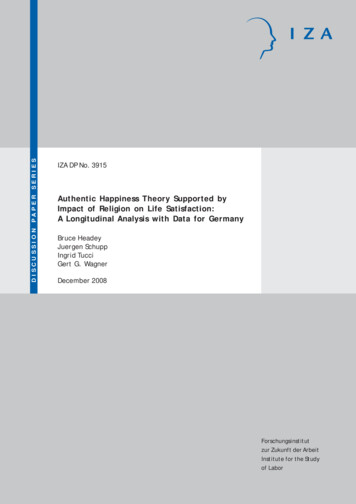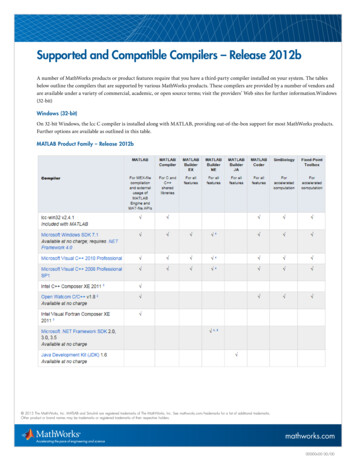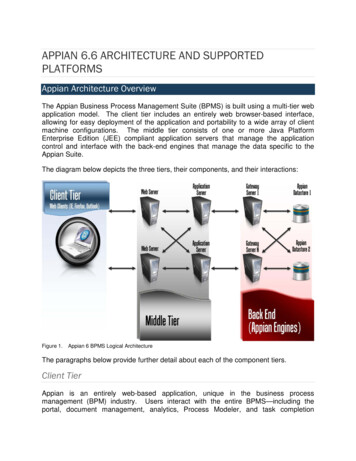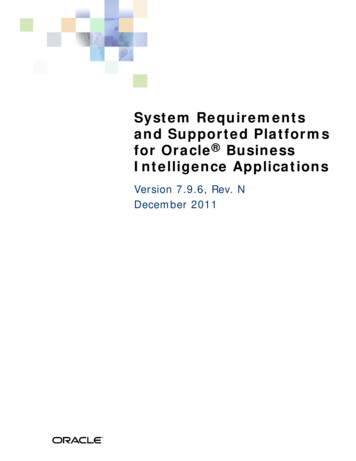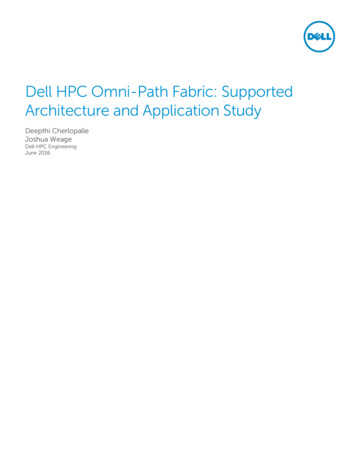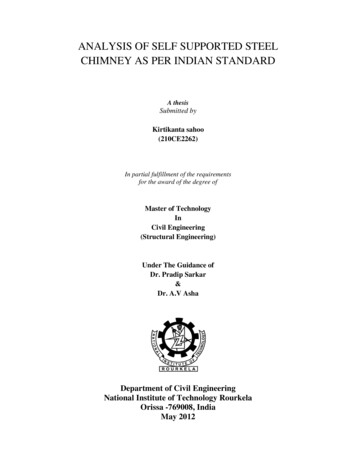
Transcription
ANALYSIS OF SELF SUPPORTED STEELCHIMNEY AS PER INDIAN STANDARDA thesisSubmitted byKirtikanta sahoo(210CE2262)In partial fulfillment of the requirementsfor the award of the degree ofMaster of TechnologyInCivil Engineering(Structural Engineering)Under The Guidance ofDr. Pradip Sarkar&Dr. A.V AshaDepartment of Civil EngineeringNational Institute of Technology RourkelaOrissa -769008, IndiaMay 2012
NATIONAL INSTITUTE OF TECHNOLOGYROURKELA, ORISSA -769008, INDIAThis is to certify that the thesis entitled, “ANALYSIS OF SELF SUPPORTEDSTEEL CHIMNEY AS PER INDIAN STANDARD” submitted by KirtikantaSahoo in partial fulfillment of the requirement for the award of Master ofTechnology degree in Civil Engineering with specialization in StructuralEngineering at the National Institute of Technology Rourkela is an authentic workcarried out by her under our supervision and guidance. To the best of our knowledge,the matter embodied in the thesis has not been submitted to any otherUniversity/Institute for the award of any degree or diploma.Research GuidePlace: RourkelaDate:Dr. Pradip SarkarDr. AV AshaAssociate ProfessorsDepartment of Civil EngineeringNIT Rourkela
ACKNOWLEDGEMENTSFirst and foremost, praise and thanks goes to my God for the blessing that has bestowed upon mein all my endeavors.I am deeply indebted to Dr. Pradip Sarkar, Associate Professor of Structural EngineeringDivision, my advisor and guide, for the motivation, guidance, tutelage and patience throughoutthe research work. I appreciate his broad range of expertise and attention to detail, as well as theconstant encouragement he has given me over the years. There is no need to mention that a bigpart of this thesis is the result of joint work with him, without which the completion of the workwould have been impossible.I am grateful to Prof. N Roy, Head, Department of Civil Engineering for his valuable suggestionsduring the synopsis meeting and necessary facilities for the research work.I extend my sincere thanks to Dr. Robin Davis P the faculty members of Structural EngineeringDivision for their helpful comments and encouragement for this work.I am grateful for friendly atmosphere of the Structural Engineering Division and all kind andhelpful professors that I have met during my course.I would like thank my parents and sister. Without their love, patience and support, I couldnot have completed this work.Finally, I wish to thank many friends for the encouragement during these difficult years,especially, Saine Sikta, Snehash, Avadhoot, Haran.Kirtikanta Sahooi
ABSTRACTKEYWORDS: self supporting steel chimney, dynamic wind, vortex shedding, geometrylimitations, resonance, stroughal critical velocityMost of the industrial steel chimneys are tall structures with circular cross-sections. Suchslender, lightly damped structures are prone to wind-exited vibration. Geometry of a selfsupporting steel chimney plays an important role in its structural behaviour under lateraldynamic loading. This is because geometry is primarily responsible for the stiffnessparameters of the chimney. However, basic dimensions of industrial self supporting steelchimney, such as height, diameter at exit, etc., are generally derived from the associatedenvironmental conditions. To ensure a desired failure mode design code (IS-6533: 1989Part 2) imposes several criteria on the geometry (top-to-base diameter ratio and height-tobase diameter ratio) of steel chimneys. The objective of the present study is to justify thecode criteria with regard to basic dimensions of industrial steel chimney.A total of 66 numbers self supporting steel flared unlined chimneys with different top-to-basediameter ratio and height-to-base diameter ratio were considered for this study. The thicknessof the chimney was kept constant for all the cases. Maximum bending moment and stress forall the chimneys were calculated for dynamic wind load as per the procedure given inIS 6533: 1989 (Part 2) using MathCAD software. Also the results were verified with thefinite element analysis using commercial software ANSYS. Basic wind speed of 210 km/hii
which corresponds to costal Orissa area is considered for these calculations. Maximum basemoments and associated steel stresses were plotted as a function of top-to-base diameter ratioand height-to-base diameter ratio. The results obtained from this analysis do not agree withthe code criteria.iii
TABLE OF CONTENTSTitlePage No.ACKNOWLEDGEMENTS . iABSTRACT . iiTABLES OF CONTENTS . ivLIST OF FIGURES . .viiABBREVIATIONS . viiiNOTATIONS . ixCHAPTER 1INTRODUCTION1.1.Overview .11.2.Literature Review.21.1. Objective .61.2. Scope of Study .61.3. Methodology .71.4. Organization of Thesis .7CHAPTER 2LOAD EFFECTS ON STEEL CHIMNEY2.1.Overview .82.2.Wind engineering .82.2.1. Along wind effects .92.2.2. Across wind effects .102.3.Wind load calculation . 102.4.Static wind effects .112.5.Dynamic wind effects .122.6.Seismic effects .15iv
2.6.1. Response Spectrum method .162.6.2. Horizontal seismic force .172.7.Shear and moment.182.8.Temperature effects .182.9.Summary .18CHAPTER 3DESIGN OF STEEL CHIMNEY3.1.Overview .193.2.Design aspects of steel chimney .193.2.1. Mechanical aspects .193.2.2. Structural aspects .203.3.Applicable codes for design .203.3.1 IS 875(Part-3):1987 .203.3.2 IS 6533(part-1):1989 .213.3.3. IS 6533(part-2):1989 .213.3.4. ASME-STS-2000 .223.5.Design methodology .223.5.1. Assumptions .223.5.2. Loadings and load combinations .233.5.2.1.Load combinations .243.6.Sample design calculations .243.6.1. Design Inputs .243.6.2. Determination of the height of the chimney .243.6.3. Other dimensions .263.6.4 Load combinations .273.6.5 Permissible stress .28v
3.6.6. Chimney weight .283.6.7. Wind load calculation .293.6.8. Design for static wind .303.6.9. Check for seismic force .373.6.10. Calculation of dynamic wind load .403.6.11. Check for resonance .453.7.Summary .47CHAPTER 4.EFFECTS OF GEOMETRYON THE SELF SUPORTING STEELCHIMNEY4.1. Introduction.484.2. Limitations on chimney geometry .484.3. Description of the selected chimney .514.4. Dynamic wind load as per IS 6533(Part-2)”1989.524.5. Results and discussions.554.6. Effect of inspection manhole on the behaviour of self supporting steelChimney .574.7. Summary and conclusions .61Chapter 5SUMMARY AND CONCLUSIONS5.1.Summary .635.2.Conclusions .645.3.Scope for future work .64vi
LIST OF FIGURESTitlePage NoFig.1.1: Self supporting steel chimney .1Fig.2.1: Regimes of fluid flow across circular cylinders .14Fig.4.1: Geometrical distribution of selected chimney models .51Fig.4.2: Fundamental mode shape of a typical chimney as obtained from finiteelement analysis .53Fig.4.3.: Comparision of fundamental mode shape obtained different analysis .54Fig.4.4: Base moment of the chimney as a function of top to base diameter. .55Fig.4.5 Base moment of the chimney as a function of height to base diameter .56Fig.4.6 Variation of bending stress as a function of geometry .56Fig.4.7: Von mises stresses for chimney without manole. .58Fig.4.8. Von mises stresses for chimney with manole .58Fig.4.9.: Top deflection of the chimney without manhole .59Fig.4.10: Top deflection of the chimney with manhole .59Fig.4.11: Mode shape without manhole consideration .60Fig.4.12: Mode shape without manhole consideration .61vii
ABBREVIATIONSACIAmerican Concrete InstituteASMEAmerican Society of Mechanical EngineersCICINDInternational Committee on Industrial ChimneysDINDeutsches Institut für NormungISIndian StandardsGLCGround level concentrationMEFMinistry of Environment and Forestviii
NOTATIONSENGLISHAArea of section normal to wind directionAhHorizontal acceleration spectrumAnAerodynamic admittance at the structure’s natural frequencyCMaximum permissible ground level concentration of pollutantCdDrag coefficientCpermissibleMaximum permissible ground level concentration pollutantsCtCoefficient depending on slenderness ratio of the structureCTCoefficient depending upon slend
NATIONAL INSTITUTE OF TECHNOLOGY ROURKELA, ORISSA -769008, INDIA This is to certify that the thesis entitled, “ANALYSIS OF SELF SUPPORTED STEEL CHIMNEY AS PER INDIAN STANDARD” submitted by Kirtikanta Sahoo in partial fulfillment of the requirement for the award of Master of Technology degree in Civil Engineering with specialization in Structural
